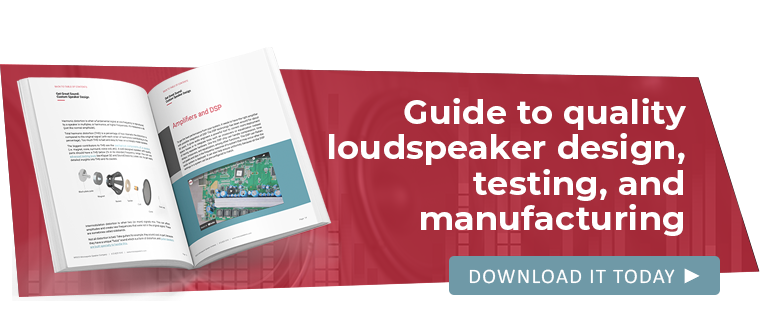What Audio DSP Can Do For You [VIDEO]
Want to start a fight among audiophiles? Ask which is better, analog or digital. This debate, which used to pit vinyl lovers against CD early-adopters, touches on the amazing capabilities of digital signal processing (DSP) in today’s modern audio systems.
Analog to Digital and Back Again
Odds are good that if you need a custom loudspeaker system designed it may incorporate DSP. Why? There’s just so much the technology can do. DSP allows transducer and audio engineers to solve complex challenges, like getting ever better audio out of ever smaller spaces (and at a better price, when compared to analog crossovers).
Of course, in order to work, the first thing a DSP does is translate an analog signal to digital with an ADC (analog to digital converter). The DSP then does its computerized magic on the ones and zeros (more on that below) before converting the signal back to analog with a DAC (digital to analog converter).
If you’re an analog purist and already skeptical, some info on sample rate and bit depth may help ease your concerns.
Sample Rate
Think of analog audio coming in a continuous wave. Digital audio tries to recreate that wave by taking a “sample” of the signal and playing it where the sound is on that wave at that instant in time. The more samples per second the closer it will sound to the analog wave (it’s like calculus and finding the area under a curve, but with sound).
CDs became the default standard with their sample rates of 44,100 samples per second (44.1kHz). There is a well established theorem in audio that if you can sample at twice the rate of the highest frequency someone can hear, then you will not experience any noticeable loss of sound quality.
Humans can only hear frequencies up to about 20kHz (most middle aged adults can’t hear things above 14kHz). So for almost any application, a sample rate of 44.1kHz is adequate. Your phone has a sample rate of just 8kHz, but a Blu-ray player may have a sample rate between 96 - 192kHz (which you could argue is overkill and simply used to impress uninformed buyers).
Bit Depth
Each sample of the signal is stored as a collection of ones and zeros. Each placeholder is called a bit. The more the bits, the more information collected on each sample. It grows exponentially.
1-bit = 2^1 = 2 levels of information
4-bit = 2^4 = 16 levels
8-bit = 2^8 = 256 levels
16-bit = 2^16 = 65,536 levels
24-bit = 2^24 = 16,777,216 levels
The benefit of increased bit depth is that your audio system will have extra resolution for more detailed sound without distortion.
MISCO’s amps have sample rates of 48 kHzand bit depths from 16-bit to 24-bit.
What DSP Can Do For You
Once DSP has converted the precious analog signal to digital, it can do all sorts of fancy tricks with it. This functionality has dramatically improved audio system design capabilities and made many features more affordable.
You can use DSP to route specific frequencies to the speakers designed to handle them best. This crossover functionality eliminates the need for passive components like resistors, capacitors, and inductors which can be costly and take up space.
You can set thresholds and adjust frequency levels to optimize sound quality. DSP can act as a guard against extremely powerful signals that would damage a speaker if they were fed into it unadjusted—thus letting you get the maximum sound out of your system without breaking it. You can adjust the signal timing to ensure the sound from a multiple speaker system arrives to the listener time-aligned.
If you have a custom loudspeaker project and are working with a manufacturer, make sure you ask about their ability to integrate DSP into your product. Also, make sure they will share the DSP configuration file with you or enable you to make adjustments in the future (not every company will do this) so you have better control of your system long-term.
